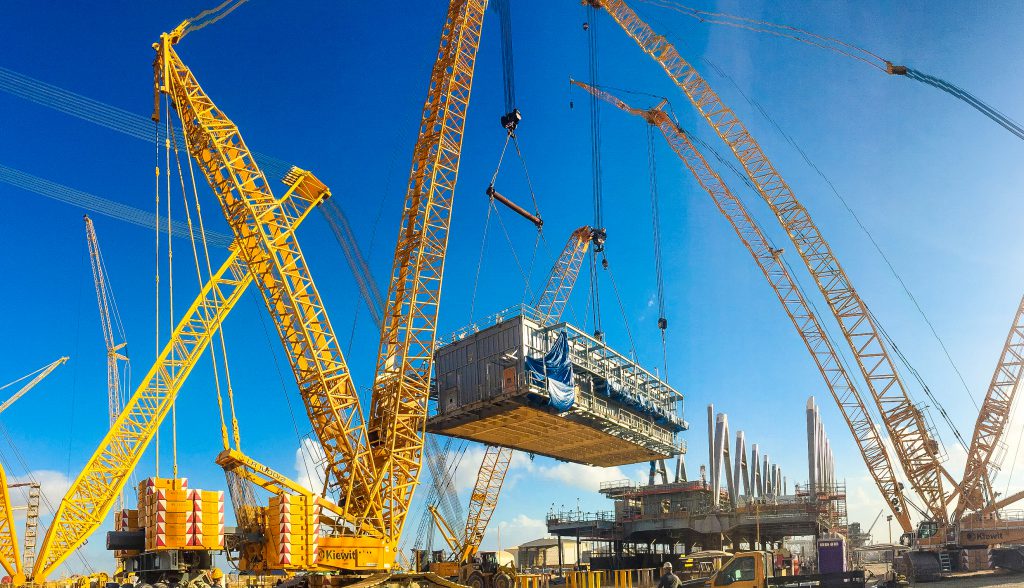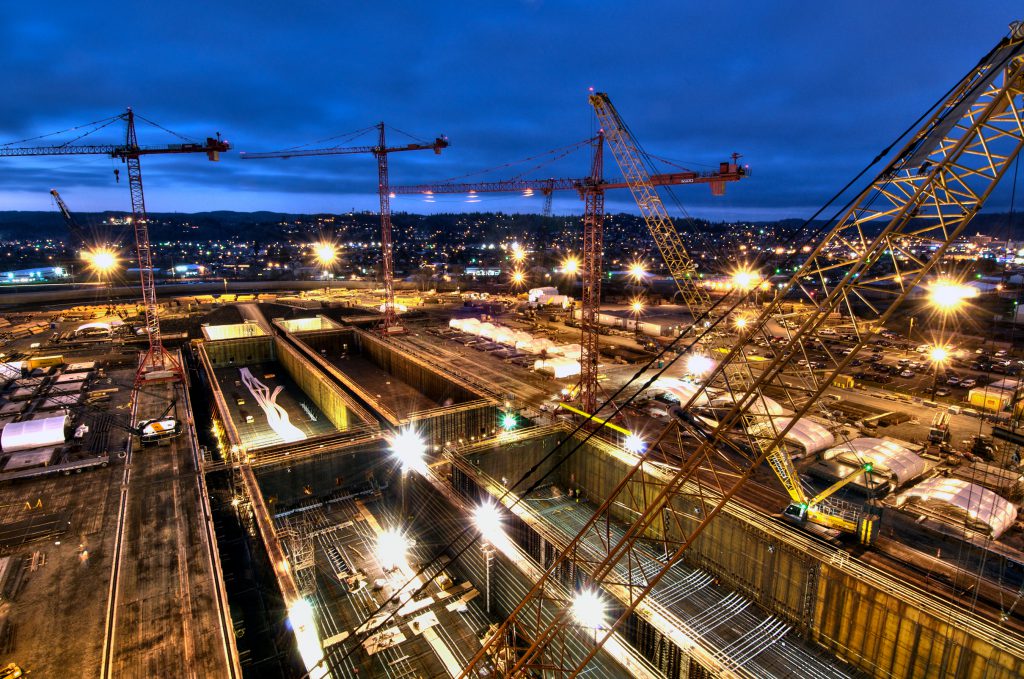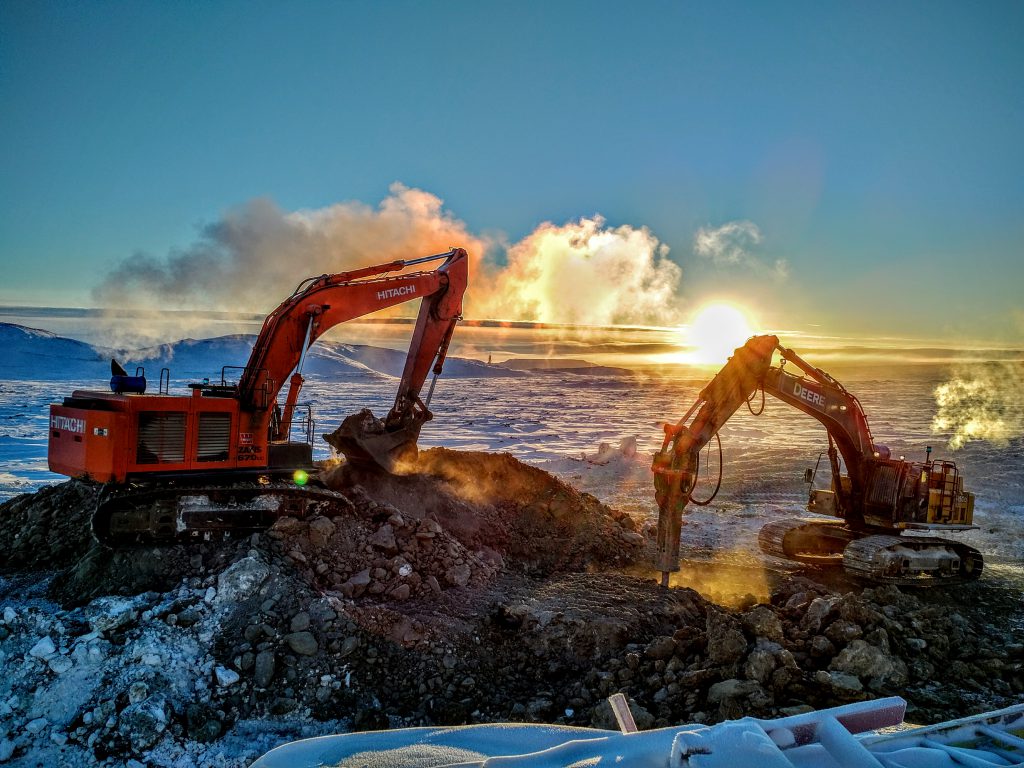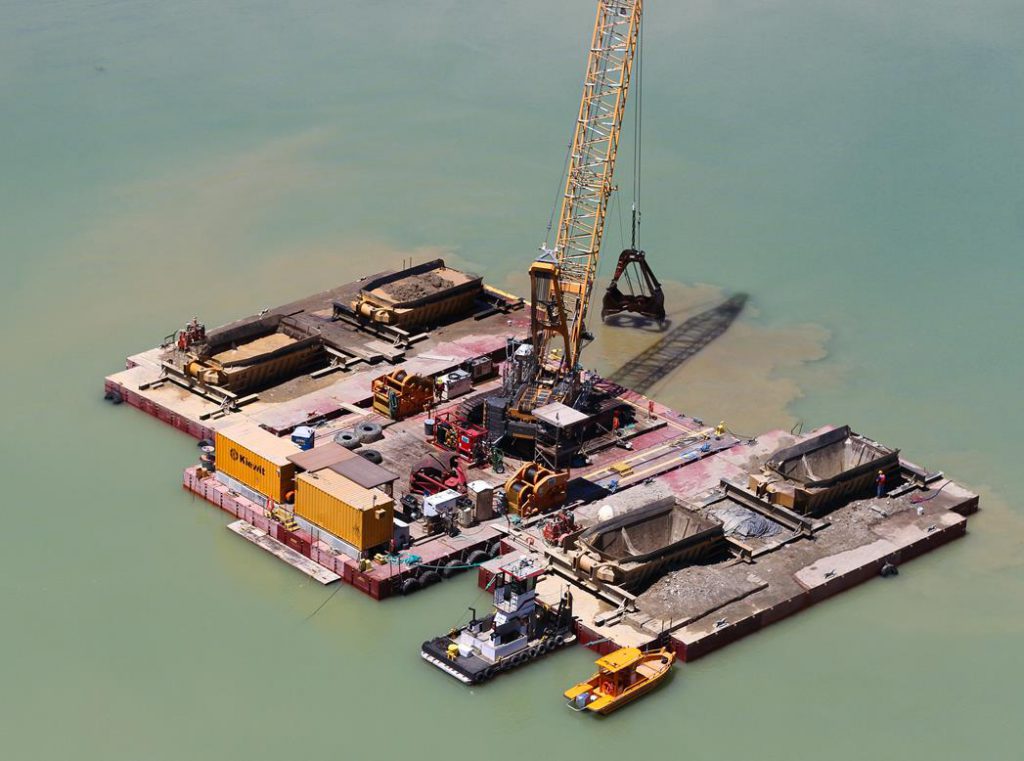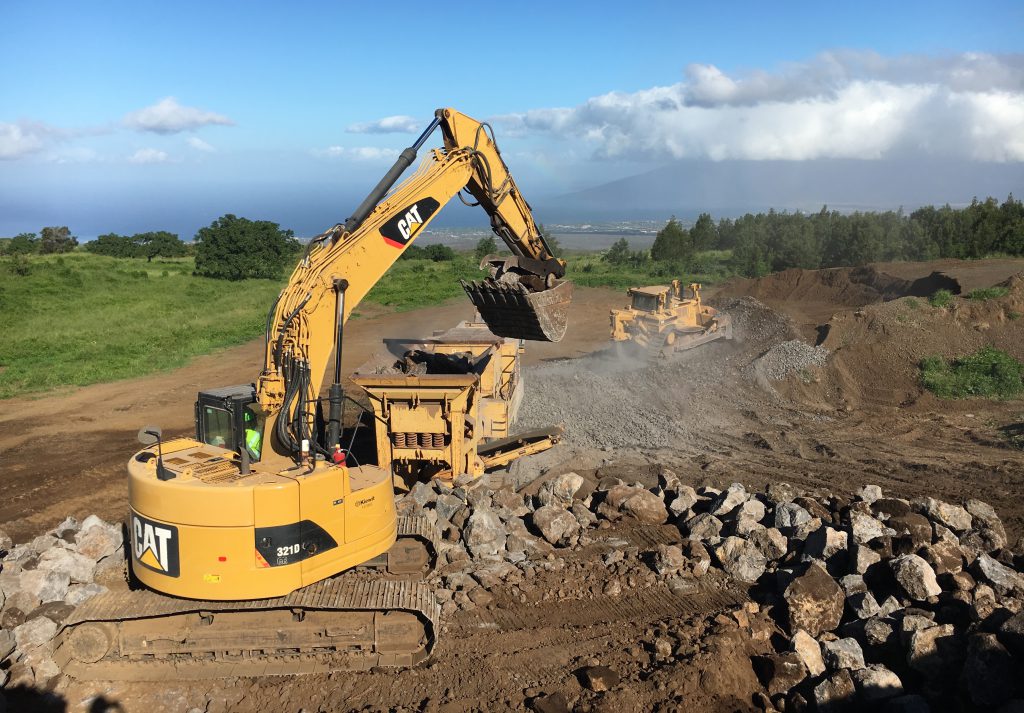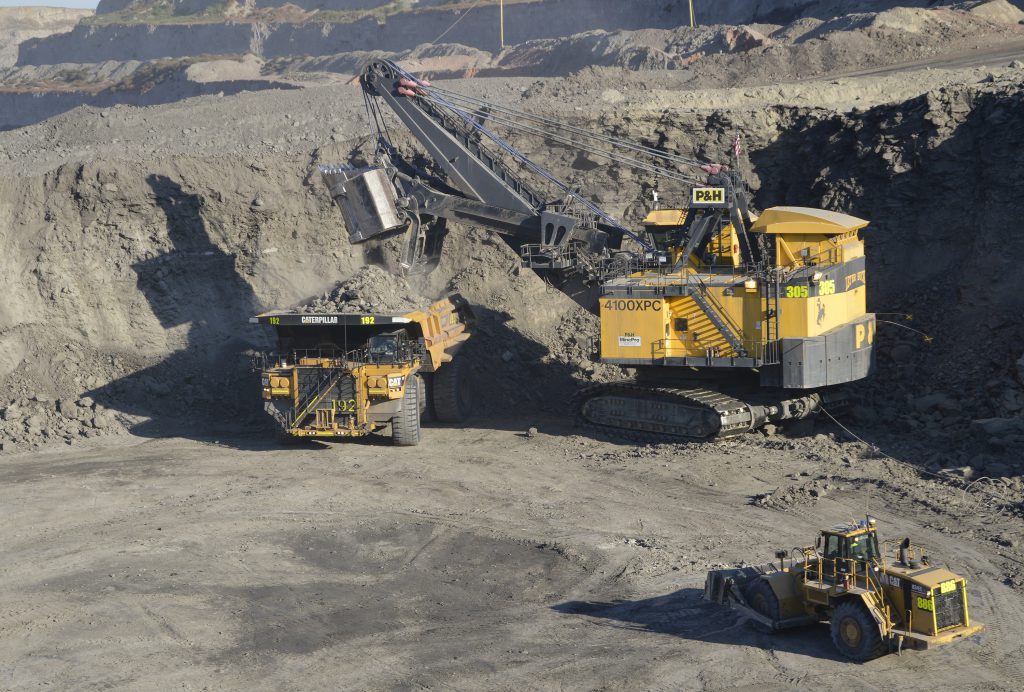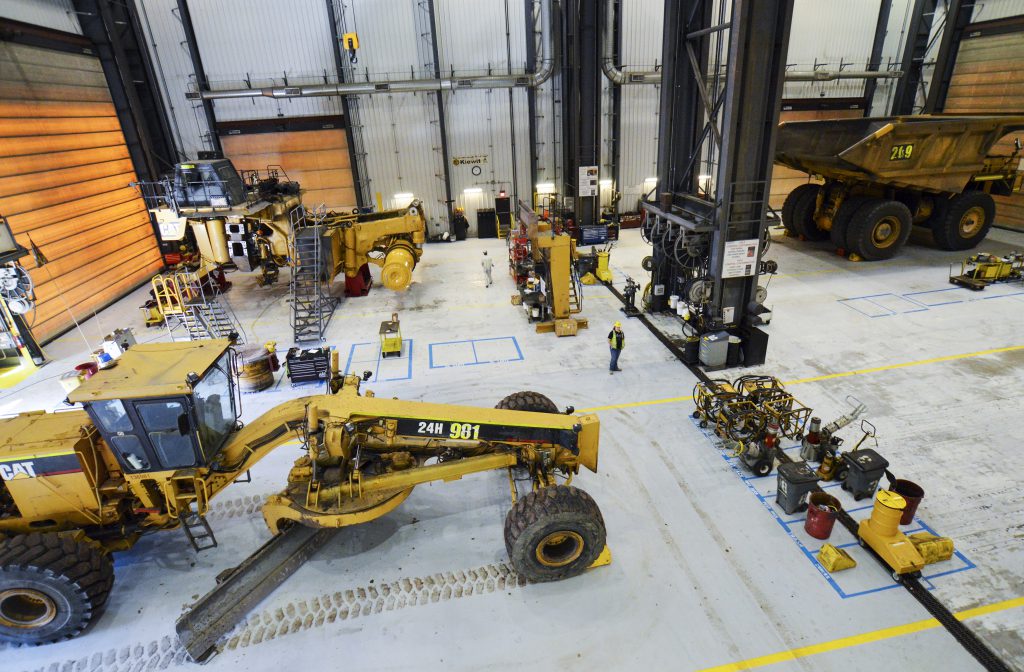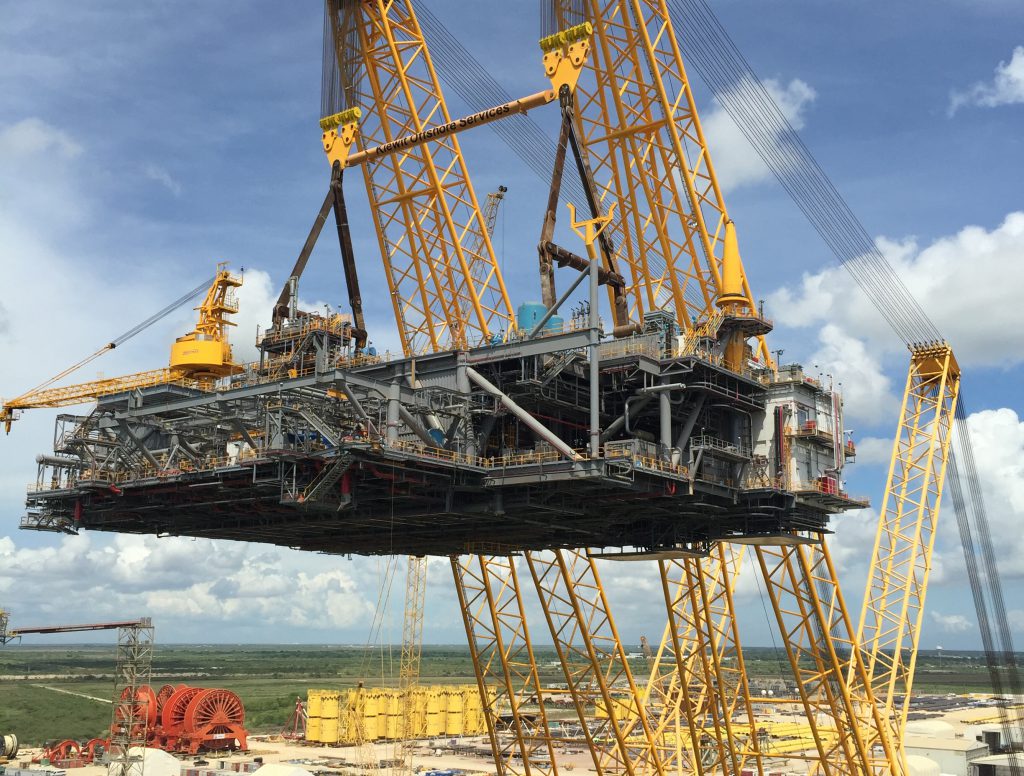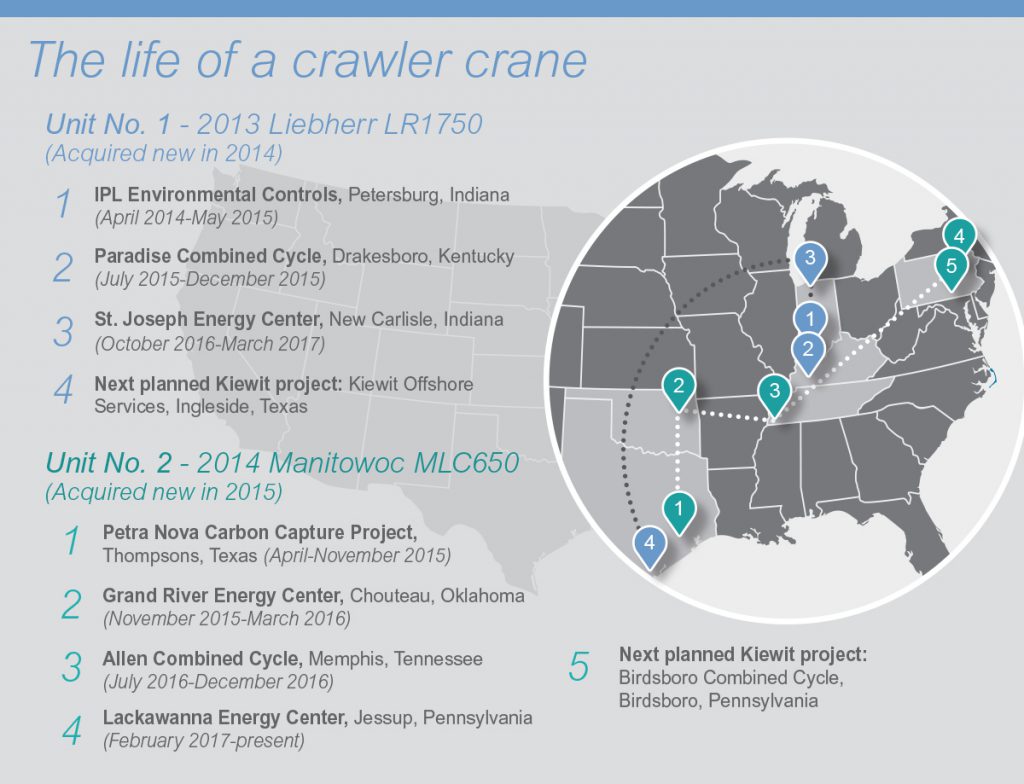With an equipment fleet consisting of 13,200 units with a $2.1 billion replacement value, Kiewit has one of the largest and most modern privately owned equipment fleets in North America — and having that fleet helps set the company apart from its competitors, explains Kiewit Equipment Director Steve Curry.
“We have a large and diverse equipment fleet at our immediate disposal. We also have the capacity to quickly add to our fleet when opportunities arise. This allows us to take on virtually any project, anywhere,” Curry said.
Not only is Kiewit able to quickly mobilize equipment across North America, but the fleet’s availability and diversity also provide teams a competitive advantage when pursuing opportunities. For instance, Kiewit can pursue an opportunity requiring specialized underground equipment, large mining tools or high-capacity cranes. Many competitors do not have immediate access to these types of specialized equipment.
“Not every contractor has this ability, but we do,” Curry said. “We own virtually every piece of equipment needed to be successful in the markets we serve. Equipment is critical. Without it, projects don’t get built.”
Several Kiewit-supplied tower cranes assist in constructing pontoons for the world’s largest floating bridge.
An excavator operates with the unique, hydraulically operated clamshell attachment at the Folsom Auxiliary Spillway project.
Cranes, cranes and more cranes
In the power, building, and oil, gas and chemical (OGC) markets, cranes are crucial to the success of a project. Having just one crane out of service can completely stop production for some projects. Kiewit’s fleet of more than 260 company-owned cranes — consisting of rough terrain, hydraulic crawler, lattice boom crawler, hydraulic truck, and tower cranes — helps ensure successful production on all types of operations.
“Crawler cranes are great for power work because of their pick-and-carry capabilities,” said Kiewit Project Manager Aaron Jensen. “Every project we work on requires heavy loads to be transferred across the jobsite. With crawler cranes, you only have to set up once, and don’t need to get trailers involved. They turn transporting and flying into one operation.”
At its peak, Kiewit’s Cove Point liquefied natural gas (LNG) project had more than 50 cranes in operation — all from Kiewit’s fleet.
Kiewit’s tower cranes can stretch more than 300 feet in the air, while providing a smaller footprint than other types of cranes — something that is especially important in vertical construction. Teams rely on the cranes for many aspects of vertical-building construction, including erecting steel, placing concrete, finishing exteriors and handling materials.
“The smaller footprint, along with the vertical and horizontal reach, make tower cranes a better choice in the building market than a crawler crane,” said Kiewit Equipment Operations Manager Clay Christian. “Many of our projects in the building market are located in congested, urban areas where there is not enough room for a crawler crane. Tower cranes allow us to move safely above and around surrounding buildings.”
Graders, rollers and excavators
When it comes to excavating, grading or compacting, Kiewit’s diverse line of excavators, motor graders and compactors saves the day. A water treatment plant is a great example. The scope for these projects includes an abundance of underground piping, mass excavations, structure excavations, demolition and grading, said Josh Young, a Kiewit sponsor, who has more than a decade of water/wastewater market experience.
For this line of work, Young needs an excavator.
“The excavator is one of the most versatile pieces of equipment we use on treatment plants, and with the right operator, they can be extremely efficient machines,” Young said. “With skilled operators, the excavator becomes an extension of their hands. It’s fun to watch.”
It’s not uncommon to see a half dozen or more excavators on a water/wastewater project at any given time, said Kiewit Sponsor Todd Orbus. Kiewit’s fleet includes hybrid excavators that harness the energy during machine swings to help conserve fuel, and use many unique attachments that help increase versatility and productivity.
At the Folsom Auxiliary Spillway project, where Orbus worked, Kiewit used two unique attachments to accelerate the schedule and reduce costs. The first was a hydraulically operated clamshell attached to a long-reach excavator with GPS controls. This allowed soft sediment excavation to occur from land versus a typical marine-based operation. Second, the team deployed a hydraulically operated rock drill attached to a material-handling style excavator to safely provide precision drilling and blasting in tight quarters on a high-angle rock face.
“Water/wastewater projects are typically diverse in scope,” Orbus said. “They require expertise in civil, structural, mechanical and electrical construction. Much like the projects themselves, excavators are versatile tools that help with constructing all types of work on water/wastewater projects.”
Both Young and Orbus believe that providing modern, well-maintained machines with the latest technology is something that craft employees have come to appreciate about Kiewit.
“Kiewit is known for its incredible equipment fleet,” Young said. “Many operators say that they like working for us for that reason. Because our excavators are often the most crucial component of an operation, we give them extra attention, just like your star quarterback. You expect the entire team to work hard, but you also have to protect the key player — and for water/wastewater projects, that’s the excavator.”
Diamonds in the rough
The Kiewit equipment fleet consists of more than just standard construction equipment, offering numerous high-cost, high-capacity, long lead-time units such as the P&H 4100XPC shovel.
The P&H 4100XPC electric mining shovel ranks as one of the largest in the world — and Kiewit’s two units keep busy at the company-owned Buckskin Mine. These shovels are equipped with 73-yard buckets to fill Kiewit’s 400-ton Caterpillar 797B/F haul trucks in only four loads. The 797 haul trucks are also among the largest of their kind.
When it comes to heavy lifting, Kiewit Offshore Services (KOS) uses a piece of equipment unlike any other in the world — the heavy lifting device (HLD).
Designed and fabricated by Kiewit, the HLD can lift large modules and equipment onto floating structures, up to 13,000 tons at a radius of 225 feet, with a hook height of more than 400 feet. It is the world’s largest on-shore lifter and, at 550-feet-tall, can be spotted on the horizon from anywhere on the shore of Corpus Christi Bay in Texas. Since its first use in 2004, the HLD has lifted more than 235,000 tons, or 470 million pounds.
Kiewit’s preventive maintenance practices ensure its fleet maintains the highest level of reliability.
The heavy lifting device (HLD) lifts an offshore topsides platform. The HLD is the only one of its kind and can lift 13,000 tons at a radius of 225 feet.
Fleet management
Ensuring that every piece of equipment in the over 13,000-unit fleet shows up when and where it’s supposed to is the responsibility of Kiewit’s Equipment organization.
During the estimating phase of a pursuit, Equipment employees evaluate the company’s fleet to identify which units can be used on a job and what gaps need to be filled with a new equipment purchase. Project equipment schedules drive these decisions, which is why the company implemented a state-of-the-art application to monitor equipment scheduling in real-time across the organization.
“Using our Corporate Equipment Schedule (CES) app, real-time equipment information is updated at the project level and feeds directly into a company-wide schedule,” said Curry.
Preventative maintenance is accounted for during planning and scheduling. Manufacturer recommendations are used to create maintenance plans for every piece of equipment. When activated, the plans generate work orders within the company’s business operations software. The work orders are used to schedule maintenance, and contain details on the appropriate steps and parts to complete it.
It’s all in a day’s work for the Kiewit equipment team.
“Equipment availability and reliability are absolutely pivotal to a project’s success,” said Curry. “It’s our job to ensure equipment is not only available when a project needs it, but is at the highest level of reliability every time.”
